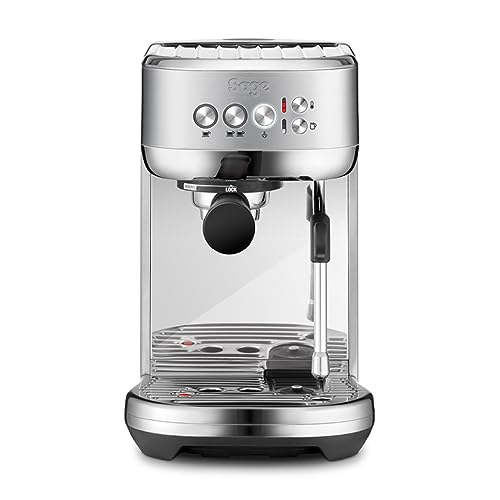How to Properly Maintain and Clean an Espresso Coffee Machine
Espresso machines use pressure to force water through coffee grounds. This type of brewing makes a stronger beverage than drip coffee. These machines require 9 bar of pressure to extract flavor from the grounds.
There are three main kinds of espresso machines. They are manual, semiautomatic and fully automatic. Semiautomatic machines allow you to regulate grinding, tamping and extraction time. They provide a balanced balance between the human hand and mechanised control.
Simple to use
The best espresso machines are easy to use. They feature an adjustable thermostat that helps keep the temperature of the water at a suitable level as well as a pressure pump that increases the amount of water per shot. The higher pressure helps the grounds dissolve faster and produces a crema with the right consistency. The machines are equipped with an milk frother to make espresso-based drinks, such as cappuccinos and lattes.
Traditional steam-driven espresso machines use an air-tight tank to heat the water until it reaches boiling point. It then releases the pressure in a shot. Although they're small and inexpensive, they can only reach only 1-2 bars of pressure which is less than the ideal 9 bars required for espresso.
Semi-automatic espresso machines work by infusing hot water into an already-ground, pre-tamped portafilter of beans. The barista oversees the extraction process, but must manually grind, measure, and tamp the beans before each cup. This machine is more expensive but it is more reliable and stability. coffee machine espresso from Blank Street Cafe says.
Full-automatic espresso machines completely remove the barista from the preparation process, making them more user-friendly than semi-automatic models. Many come with built-in grinders which click into the portafilter. They automatically grind and dose the beans, and can be adjusted to make different drinks. Some machines come with an automatic milk hopper that can blend milk and pour it to you.
Easy to clean
Espresso machines utilize greater pressure and heat than drip coffee makers to make an intense, full-bodied shot. They also have a milk-frothing system that allows you to make cappuccinos and lattes. They also require more frequent maintenance than a drip machine such as descale and routine cleaning. Fortunately, the majority of espresso machines are easy to clean. Some models that we have listed are designed to make this process easier.
The majority of espresso machines have an in-built portafilter that holds the grounds of coffee when brewing. Some models have a grouphead that is a set of components that actually perform the extraction. Backflushing your machine regularly keeps these parts clean and free of gunk and grit. This means cleaning and brushing the portafilter, locking it and running the brew process multiple times. Backflushing is performed daily in a lot of coffeehouses, however at home, it should be done once a week.
It is recommended to use softened or filtered water, since it can reduce the accumulation of mineral and the need to remove scale. It is crucial to remember that a small amount of water is required for extraction. Too much can overpower the taste, while too little can lead to an unsavory and weak cup of coffee. Maintaining your machine will ensure that it will continue to function properly and taste delicious for as long as you have it.
Easy to maintain
An espresso machine is a magnificent piece of equipment that allows you to serve a broad variety of coffee drinks. A carafe-style coffee maker could provide the same results however, an espresso machine needs more pressure and temperatures. In order to do this, it needs to be properly maintained and cleaned. You don't need to be expert to keep your espresso maker in good working order.
You'll need to clean the gasket every week. This is where the coffee oils collect and can cause bitter taste of coffee that has gone rancid. Backflush your group using the water-espresso cleaner solution. It is also recommended to scrub the screen of your group including the nooks and crevices with a nylon toothbrush or Coffeetool.
It is also essential to wash the drip tray regularly because it collects coffee waste from each brewing cycle. It can also become a perfect breeding ground for bacteria and mold, which can affect the taste of your coffee. It is also important to clean your machine's exterior regularly to avoid the build-up of milk and coffee residue.

Take a look at a milk system cleanser, which is designed to clean all components that come in contact with milk. These are available at many grocery stores and are easy to use.
Repairable and easy to fix
A coffee machine or espresso maker is an extremely useful appliance for a home or office. However, like any other electrical appliance, it may be faulty at times. It can be frustrating when your coffee machine or espresso isn't working. Fortunately, the majority of these problems can be easily resolved. In the majority of cases, they're caused by a simple mistake or a lack of maintenance.
First, ensure that the machine is plugged in and powered on. It is also essential to check the water tank for blockages or clogs. If the problem persists it is possible to get a professional technician.
Some of the most common issues that coffee and espresso machines experience include no power, no heat, a malfunctioning steam wand, or a failure to produce sufficient pressure. Certain of these issues are easily resolved, but others require more extensive troubleshooting or cleaning. These tasks should be completed with extreme care and prudence since many parts are delicate and can be easily damaged.
Consult a professional if you are unsure how to repair your espresso or coffee machine to avoid costly repairs. Make sure you use correct tools and follow safe procedures when fixing coffee or espresso machines. Also, be aware that some brands require that their coffee or espresso machines be repaired at an accredited national repair center.
